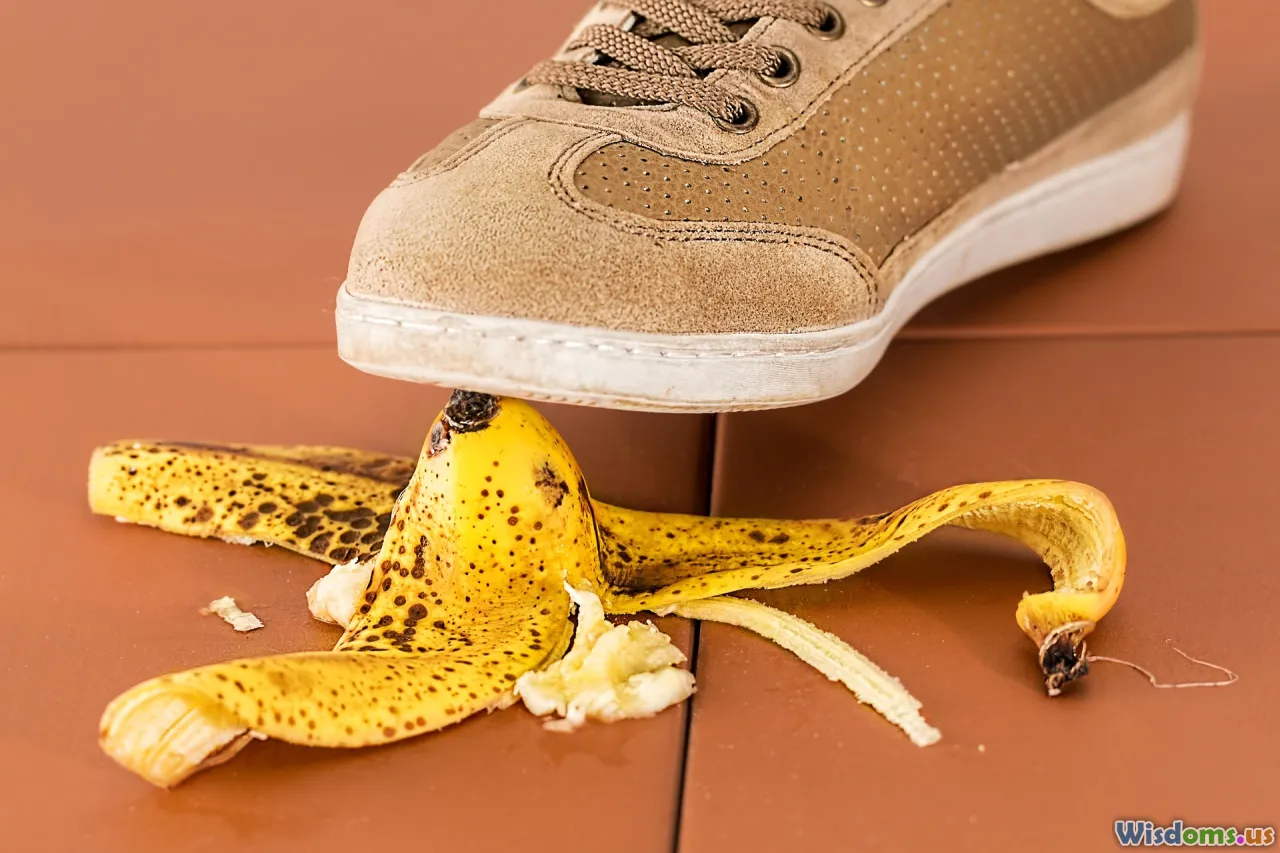
Simple Habits That Build a Creative Mindset Daily
14 min read Discover daily habits that nurture a creative mindset for improved problem-solving and innovation. (0 Reviews)
Simple Habits That Build a Creative Mindset Daily
Creativity isn't reserved for artists, musicians, or visionaries. Every one of us has a creative spark waiting to be kindled. Developing a creative mindset is less about talent and more about consistently nurturing small, everyday habits. Whether you're a business leader, parent, or student, these habits can transform the way you approach problems and ideas. Let's explore practical ways to weave creativity into the fabric of your daily routine.
Start Your Day with Curiosity

Ever noticed how children bombard the world with relentless questions? Curiosity is at the heart of a creative mindset. Reclaiming that childlike wonder can profoundly affect your perception and your creative power.
How-to:
- Ask yourself three thought-provoking questions every morning. Examples could be:
- What if I approached today as if it were entirely new?
- What could I learn from a surprising source?
- What unconventional way could I solve a simple problem today?
- Record your answers in a journal or a note app. Reflecting later might offer unexpected insights.
Example: Former Apple CEO Steve Jobs reportedly asked himself every morning, “If today were the last day of my life, would I want to do what I am about to do today?” Just a single probing question can alter your perspective for the entire day.
Engage in Mindful Observation

Personal creativity thrives when we are receptive and attentive to our surroundings. Mindful observation—the act of deliberately noticing details—can launch you into a more engaged and imaginative state.
Actionable Tips:
- Take a 15-minute walk and choose to observe 5 surprising or beautiful details. These could be the texture of tree bark, the color of a shadow, or the sound of distant laughter.
- When reading or watching something, pause and ask: "What stands out or feels unusual about this?"
Fact: Harvard research has shown that even short daily mindful practices improve idea generation and cognitive flexibility. The key lies in regularly sharpening your senses, much like a photographer adjusts their lens to capture the world anew.
Dedicate Time to Play

Play isn’t just for children—it’s an essential exercise for the adult brain as well. Engaging in playful activities encourages risk-free exploration, which can spark innovative thinking far removed from the pressure of achieving specific outcomes.
How-to:
- Reserve 15-30 minutes each day for creative play. Build with LEGO, try a new drawing app, solve Sudoku or logic puzzles, or tinker with a DIY kit.
- Attend improv classes or play storytelling games. These are proven to boost creative response times and adaptability.
Example: Google famously lets employees spend 20% of their working hours on personal projects, sparking renowned creations like Gmail and Google News. Playful exploration often sows the seeds for big ideas.
Keep a Random Idea Journal

Ideas often arrive unpredictably. Capturing them in the moment means you can review, remix, and develop those snippets later.
Tips and Insights:
- Minimize friction: always have a pocket notebook, sticky notes, or a note app handy. Record even half-baked concepts or "bad" ideas.
- Spend a few moments each week reviewing and combining ideas in unexpected ways. You might spot patterns, connections, or innovations.
- Use sketches, mind maps, or sticky notes to visualize clusters of ideas. Creativity often blossoms at the intersection of unrelated concepts.
Example: Author James Altucher commits to jotting down ten new ideas every day. Not all will be stunning, but the regular act of idea-generation keeps his imagination agile and responsive.
Seek Out Diversity—Of Input and People

A creative mindset is enriched when it’s exposed to a variety of influences. Stimulating your brain with diverse inputs helps cross-pollinate different fields of thought.
How-to:
- Each week, learn something outside your field—watch a documentary, read a book from a different genre, or attend a different type of event.
- Engage in conversations with people of varying backgrounds and perspectives.
- Collaborate on projects with colleagues in other disciplines.
Fact: A Stanford study found that teams with diverse professional backgrounds consistently outperformed homogeneous groups on creative problem-solving tasks.
Embrace Constraints and Challenges

It may sound counterintuitive, but limits often ignite our most inventive thinking. When we’re forced to work within constraints, we’re compelled to innovate.
Tips and Techniques:
- Try creative sprints: Limit yourself to 10 minutes and produce as many solutions as possible to a single problem.
- Use resource constraints positively—attempt a DIY project only using supplies already at home, or write poetry with only 100 words.
Example: The hit movie "Jaws" suffered from a malfunctioning mechanical shark during production, leading Spielberg to suggest instead implying the shark’s presence. This constraint gave birth to one of cinema’s most suspenseful and iconic thrillers.
Practice Reflective Downtime

Just as a field needs time to rest for healthy crops to grow, your mind requires downtime to replenish its creative reserves. Unstructured reflection makes space for unconscious connections.
How-to:
- Set aside 10–20 minutes a day to simply daydream, meditate, or enjoy a mindless activity (puzzles, gardening, etc.)
- Before bed, spend five minutes thinking back on the day—What caught your attention? What problems left you curious?
Fact: Psychological research suggests that mind-wandering and relaxed states often precede moments of sudden insight—the famed “aha!” phenomenon.
Experiment with New Experiences Regularly

Originality is partly about recombining familiar things in new ways. Trying something novel primes your brain for flexibility and eagerness to learn.
Tips and Examples:
- Pick up an unusual hobby (pottery, coding, salsa dancing, urban foraging).
- Travel to neighborhoods you’ve never explored or order unfamiliar dishes at a restaurant.
- Join workshops or online courses outside your core interests.
Example: Richard Feynman, the brilliant physicist, tapped into his famed creative problem-solving after immersing himself in sketching, bongo drumming, and deciphering Mayan hieroglyphics. Each new activity bred unexpected ideas in his scientific work.
Nurture a Supportive Creative Environment

Your environment subconsciously nudges your mood and creative abilities. A thoughtful, stimulating space can help translate creative intentions into daily habits.
Actionable Advice:
- Declutter workspaces but adorn them with objects that evoke inspiration—art prints, inspiring quotes, living plants, souvenirs from travels, or intriguing books.
- Keep tools for creativity within arm’s reach: blank notepads, colored pens, musical instruments, or a whiteboard for brainstorming.
- Craft rooms that allow for flexibility. Moveable chairs, open tables, or calm lighting give your space adaptive energy.
Fact: A study at the University of Minnesota found that "disordered" spaces (within reason) led to more creative ideas than overly tidy ones. Artistic Café-style environments can provide a creative nudge.
Regularly Reframe Problems

A creative mind doesn’t just accept the first framing of a problem—it plays with perspectives and asks new questions. Reframing transforms obstacles into opportunities.
How-to:
- Phrase challenges differently: Instead of “How do I solve X?” ask, “What would happen if I ignored traditional approaches to X?” or "How would a child (or an inventor, musician, etc.) solve this?"
- Identify the underlying assumption in your problem—then consciously break it.
- Map out multiple “what if” scenarios before choosing a course of action.
Example: When the Polaroid camera was invented, the problem wasn’t “How to take better photos?” but “Why do photographers have to wait for their images?” Shifting the focus led to instant photography.
Celebrate (and Learn from) Failure

Every creative journey encounters setbacks. Rather than discouragement, approach failures as valuable opportunities for insight and refinement.
Tips:
- After a misstep, journal what worked, what didn’t, and one lesson to apply next time—emphasizing learning, not self-judgment.
- Share your creative bloopers with friends or colleagues. Normalizing mistakes can foster openness and innovation in communities.
- Remind yourself: Every breakthrough—like sticky notes, chocolate chip cookies, or penicillin—began as an accidental discovery.
Example: Architect Frank Gehry’s first model for the Guggenheim Bilbao looked like a crumpled piece of paper. Instead of dismissing it, he iterated, letting the apparent mistake lead to a globally acclaimed design.
Commit to Lifelong Learning

A creative mindset is sustained by curiosity and continual development. Dedicating energy to learn new skills or theories keeps your thinking fresh and adaptable.
Actionable Advice:
- Make learning a daily ritual, like reading a chapter from a new book or watching an educational video.
- Pursue micro-learning by setting aside 10–15 minutes to pick up a random skill—be it basic coding, a new language, or the history of jazz.
- Engage with online platforms like Coursera, MasterClass, or TED to sample diverse topics.
Fact: Studies show that adults who pursue ongoing education are better at adapting to change and more likely to bring inventive solutions to work and life challenges.
Building a creative mindset isn’t about grand transformation overnight. It’s about weaving tiny, practical habits and playful experiments into daily life, amplifying your natural ability to see the world not just as it is, but as it could be. Make space for curiosity, variety, resilience, and rest, and your creative spark will evolve into a steady and luminous resource.
Rate the Post
User Reviews
Other posts in Creativity & Innovation
Popular Posts














